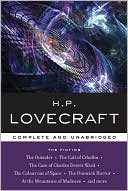Selected Prose of Heinrich von Kleist
“Kleist’s narrative language is something completely unique. It is not enough to read it as historical—even in his day nobody wrote as he did...An impetus squeezed out with iron, absolutely un-lyrical detachment brings forth tangled, knotted, overloaded sentences painfully soldered together...and driven by a breathless tempo.”—Thomas Mann\ Peter Wortsman captures the breathlessness and power of Heinrich von Kleist’s transcendent prose. These moral tales move across inner landscapes, exploring...
Search in google:
Searing searching tales of moral crises and faith. Kleist is a sculptor of delirium.Publishers WeeklyCompiled and translated by Peter Wortsman, this collection of short stories, novellas and literary fragments by German writer Heinrich von Kleist (1777–1811) is impressive not only for its content but for its relevance centuries later. In “The Earthquake in Chile,” Jeronimo Rugera is jailed for impregnating his student, Donna Josephe, and is contemplating suicide on the day of her arranged beheading when an earthquake thunders through the city and frees him. Rugera, wandering through the rubble-torn streets, is astonished to find that both his love and their baby have miraculously been spared, but the bloodthirsty nature of the surviving townspeople has not abated. Based on a true event, “The Marquise of O” centers on an Italian widow courted by Count F., who asks for her hand in marriage. Meanwhile, she notices her body transforming and when the surprise pregnancy is confirmed, her family banishes her in disgrace, and she seizes upon the plan of advertising in the newspaper for the father to step forward and prove her innocence. A dark, charming collection of twisted fairy tales for grownups. (Jan.)\\
\ Publishers WeeklyCompiled and translated by Peter Wortsman, this collection of short stories, novellas and literary fragments by German writer Heinrich von Kleist (1777–1811) is impressive not only for its content but for its relevance centuries later. In “The Earthquake in Chile,” Jeronimo Rugera is jailed for impregnating his student, Donna Josephe, and is contemplating suicide on the day of her arranged beheading when an earthquake thunders through the city and frees him. Rugera, wandering through the rubble-torn streets, is astonished to find that both his love and their baby have miraculously been spared, but the bloodthirsty nature of the surviving townspeople has not abated. Based on a true event, “The Marquise of O” centers on an Italian widow courted by Count F., who asks for her hand in marriage. Meanwhile, she notices her body transforming and when the surprise pregnancy is confirmed, her family banishes her in disgrace, and she seizes upon the plan of advertising in the newspaper for the father to step forward and prove her innocence. A dark, charming collection of twisted fairy tales for grownups. (Jan.)\\\ \ \ The Barnes & Noble ReviewFrom Michael Dirda's "LIBRARY WITHOUT WALLS" column on Barnes & Noble Review\ Heinrich von Kleist (1777-1811) only wrote eight stories, but they are among the glories of German, and world, literature. The best known to American readers is almost certainly the novella-length "Michael Kohlhaas," in large part because E. L. Doctorow borrowed from it for the Coalhouse Walker portions of his novel Ragtime. As usual, Kleist hooks the reader with his very first sentence:\ Toward the middle of the sixteenth century, there lived on the banks of the Havel a horse dealer by the name of Michael Kohlhaas, the son of a schoolmaster, one of the most upright and at the same time one of the most terrible men of his day.\ That objective, dispassionate tone -- it is, in effect, the style of epic -- persists throughout this thrilling tale of a scrupulously just man who, repeatedly wronged by the corrupt and powerful, finally takes up the sword and the firebrand. Before Michael Kohlhaas is through, castles will be burned to the ground, cities ravaged, and strange Gypsy fortunes fulfilled. Just to stop this righteous vigilante will eventually require nothing less than the combined efforts of the Electors of Brandenburg and Saxony, the theologian Martin Luther, and the Emperor of the Holy Roman Empire himself.\ To Thomas Mann "Michael Kohlhaas" was not only "magnificent," but also "perhaps the strongest of all German stories." (I can't help but wonder if the great novelist added "perhaps" because of his own "Death in Venice.") However, according to the scholar Anthony Stephens, Kleist's "The Earthquake in Chile," hasattracted "more critical exegesis than any other prose narrative of comparable length in German literature." With the dramatic structure of a three-act play, it takes up its author's favorite theme -- how easily one may be mistaken about actions, people, or the meaning of narratives and events:\ In Santiago, the capital of the kingdom of Chile, at the very moment of the great earthquake of 1647 in which many thousands of lives were lost, a young Spaniard by the name of Jeronimo Rugera, who had been locked up on a criminal charge, was standing against a prison pillar, about to hang himself.\ Note how Kleist's sentence moves from the general to the particular, as he gradually, almost cinematically zeroes in on the despairing Jeronimo. From here, there unfolds a tale of sincere but illicit love, one that begins with the discovery of a pregnant novice in a convent, evolves into a brief Rousseauian idyll, and ends with a scene of Dionysiac religious madness. If "Michael Kohlhaas" sometimes reads like a miniaturized Count of Monte Cristo in that we can't help but approve of its bloody avenger-hero, "The Earthquake in Chile" belongs to the category of the "conte cruel," containing elements of both Ambrose Bierce's "An Occurrence at Owl Creek Bridge" and Villiers de l'Isle-Adam's "The Torture by Hope."\ To what category, though, should one assign "The Marquise of O--"? Despite a rape, a near murder, and a scene of virtual incest, this wonderful story is essentially a comedy of manners. Once again, Kleist opens with an amazing sentence, elaborate in syntax and deadpan in tone:\ In M---, a large town in northern Italy, the widowed Marquise of O--, a lady of unblemished reputation and the mother of several well-bred children, published the following notice in the newspapers: that, without her knowing how, she was in the family way; that she would like the father of the child she was going to bear to report himself; and that her mind was made up, out of consideration for her people, to marry him.\ There, in utero, is the plot. But exactly how and when did the lovely Marquise become pregnant? She herself has no clue. As in an Agatha Christie whodunit, it turns out that the act occurs in the caesura between two sentences, though the identity of her sexual assailant is hardly a mystery to the attentive reader. More disturbing are the reactions of the Marquise's father when he believes his still-young daughter has besmirched her virtuous widowhood by taking a secret lover. First, this domineering military officer erupts in irrational violence, then he brutally flings the Marquise to the floor and finally he seizes a pistol and tries to shoot her dead. Yet even this rage pales beside the pair's far more unsettling reconciliation. The Marquise's mother describes the scene:\ Laying her ear against the door, she discerned a soft fading whisper that seemed to be coming from the marquise; and peeking through the keyhole, Madame von G. . . . observed her daughter seated on the commandant's lap, which he had never before allowed. Finally, opening the door, her heart leapt for joy at the sight of her daughter lying with her neck flung back and eyes shut tight in her father's arms, while he, in his armchair, his eyes full of glimmering tears, pressed long, hot, parched kisses on her mouth, just like a lover! The daughter said nothing, he said nothing; he sat with his gaze bent over her, as though over the first love of his life, and pressed a comforting finger against her mouth and gently kissed her. . . . in unspeakable bliss.\ As usual, Kleist overturns the conventions, this time with a tableau that amalgamates the religious and the erotic. Likened to lovers, father and daughter are simultaneously a reversed Pietà. Such frissons of the transgressive appear repeatedly throughout the German writer's so-called "moral tales." For instance, in "The Foundling," a woman removes her clothes each night while sighing in ecstasy before the portrait of a handsome young man. She is then later assaulted by an adopted stepson dressed as the figure in the painting. As "The Marquise of O--" stresses, even the most angelic may succumb to devilish impulses.\ That devil-angel dichotomy is made particularly emphatic in "The Betrothal in Santo Domingo." Once again Kleist shows the dire consequences of misreading a situation, of failing to trust in the beloved, despite appearances. He does this in the most black and white way possible, in a tale of racial violence and tragic passion.\ Set at the beginning of the 19th century during the revolution on Haiti, "The Betrothal in Santo Domingo" will be for many readers Kleist's most disturbing story. A former slave named Congo Hoango has murdered his master and become the leader of a brutal gang devoted to exterminating the whites. To this end, Congo Hoango employs his elderly mulatto mistress Babekan and her alluring mestizo daughter Toni to trap unsuspecting Frenchmen. Beguiled by the luscious Toni, the men let down their guard and are then set upon by Congo and his band.\ One night, though, a handsome Swiss appears when Congo is away. Gustav soon captures Toni's affections with a sad tale of heroic self-sacrifice -- and immediately seizes the opportunity to have his way with her. From that point on, the young woman feels herself betrothed and immediately alters her allegiance, now denying her negritude and identifying with the race of her beloved. But she keeps her change of heart a secret from everyone, especially when Congo Hoango unexpectedly returns. To save Gustav from certain death, Toni acts with dispatch and cleverness, but in such a way that her intentions are readily misconstrued. Like "The Earthquake in Chile," this is a tale of multiple ironies and terrible disaster.\ Kleist's ironies are, of course, what make his fiction so appealing to modern sensibilities. By contrast, the writer's attractively doomed and abbreviated life is nothing if not Romantic. The scion of an old Prussian military family, Kleist was by all accounts nervous and maladroit in society, hypochondriacal, a restless traveler, deeply ambitious (he hoped to unseat Goethe as the leading German author), and, ultimately, a suicide at 34. Reading Kant, he explained, had undermined his faith in Enlightenment reason, and most of his life was as unsettled as the Napoleonic era he lived through.\ Thus, while Kleist writes with surprising frankness about the darker reaches of eros, his own sexuality remains enigmatic. Before breaking off his engagement to a suitable young woman, his letters allude to some kind of mysterious impairment to happiness; later he flirts seriously with a cousin old enough to be his mother. Even more seriously, he seems to have suggested double-suicide to more than one female acquaintance -- and eventually found in the cancer-ridden Henriette Vogel the partner he was looking for. He shot her, then himself.\ When writing to his sister, to whom he was extremely close, Kleist regularly enjoyed posing philosophical conundrums, such as "Which is preferable: to have been happy briefly or never to have been happy at all?" In a similar vein, his stories examine myriad forms of betrayal -- by loved ones, by the law, and even by God. Those I haven't already discussed include a ghostly tale, "The Beggarwoman of Locarno"; a savage account of misplaced trust that reads like something out of Boccaccio ("The Foundling"); a medieval legend that shows that the wheels of God's justice sometimes grind slow but exceedingly fine ("The Duel"); and "Saint Cecilia, or the Power of Music," in which four brothers, intent on disrupting a Catholic church service, suffer a terrifying transformation.\ Among 19th-century writers, Kleist sometimes resembles Prosper Mérimée, with whom he shared a cool, exacting prose style, an interest in history, and a penchant for plots built around revenge and the supernatural. Among moderns, he periodically calls to mind Isak Dinesen, some of whose "gothic tales" and "winter's tales" might have been his. But his greatest disciple is undoubtedly Franz Kafka, whose fables of uncertain identity and bureaucratic horror take the Kleistian sensibility to its limits. Indeed, Kafka once wrote that he counted Kleist "one of the four men I consider to be my true blood-relations." (The others were the Austrian playwright Franz Grillparzer, Dostoevsky, and Flaubert.)\ Given the excellence of Heinrich von Kleist's fiction, it is surprising to realize that he was arguably an even finer verse dramatist. The Broken Pitcher is one of the best comedies in German, while Penthisilea possesses the archaic and hallucinatory power of Euripides' Bacchae. It charts the tragic passion that springs up at Troy between two enemy warriors, the Greek hero Achilles and Penthisilea, the Queen of the Amazons. His last play, The Prince of Homburg, may even be Kleist's single greatest work: In it, the eponymous hero wins an important battle by ignoring a command, only to find himself condemned to death for disobeying orders. Near the end, as he awaits execution, the Prince is given a carnation and responds, with typical graciousness: "How kind of you. When I go home I'll see it's put in water."\ There are several collections of Kleist's prose available. I myself first fell in love with the stories in Martin Greenberg's 1960 edition, and I cite his version in my three opening quotes. Greenberg later translated five of the plays in 1988. In the ever-reliable Penguin Classics, David Luke and Nigel Reeves claim to correct some of Greenberg's errors while preserving his "frequent felicities." The most substantial one-volume collection is Selected Writings of Heinrich von Kleist, edited and translated by David Constantine; it includes the three aforementioned plays, all the stories, a selection of anecdotes and letters, and three essays.\ Finally, there's a handy sampler, published just this month: Selected Prose of Heinrich von Kleist, translated by Peter Wortsman. It appears as a welcome addition to the fine Archipelago series (though far too many typos slipped by its copy editor). I quote its version of the incest-scene in "The Marquise of O-." The squarish paperback includes five stories, a couple of fragments, and two essays, "On the Gradual Formation of Thoughts While Speaking" and the celebrated "On the Theater of the Marionettes." In this last, Kleist reflects on how natural grace is only possible to those with an undivided nature, i.e., those "devoid of consciousness," like animals, or those that "possess an infinite consciousness, such as in the jointed manikin or the god." Like other romantics, Kleist would certainly agree with Dostoevsky's Underground Man: too much consciousness is a disease, a positive disease.\ Fifty years ago, Martin Greenberg tried to determine the particular quality that gives Kleist his startling modernity. He pointed, finally, to "the questionableness at the heart of his world, the almost diabolical ambiguity of its atmosphere, the way things tremble and shift and make one wonder if they are what they seem." In essence, Kleist consistently subverts our expectations. Like the earthquake in Chile, his fiction causes the apparently solid ground beneath our feet to shudder, crack, and, finally, give way.\ \ \ \ \








